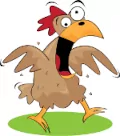Inbreeding in chickens.
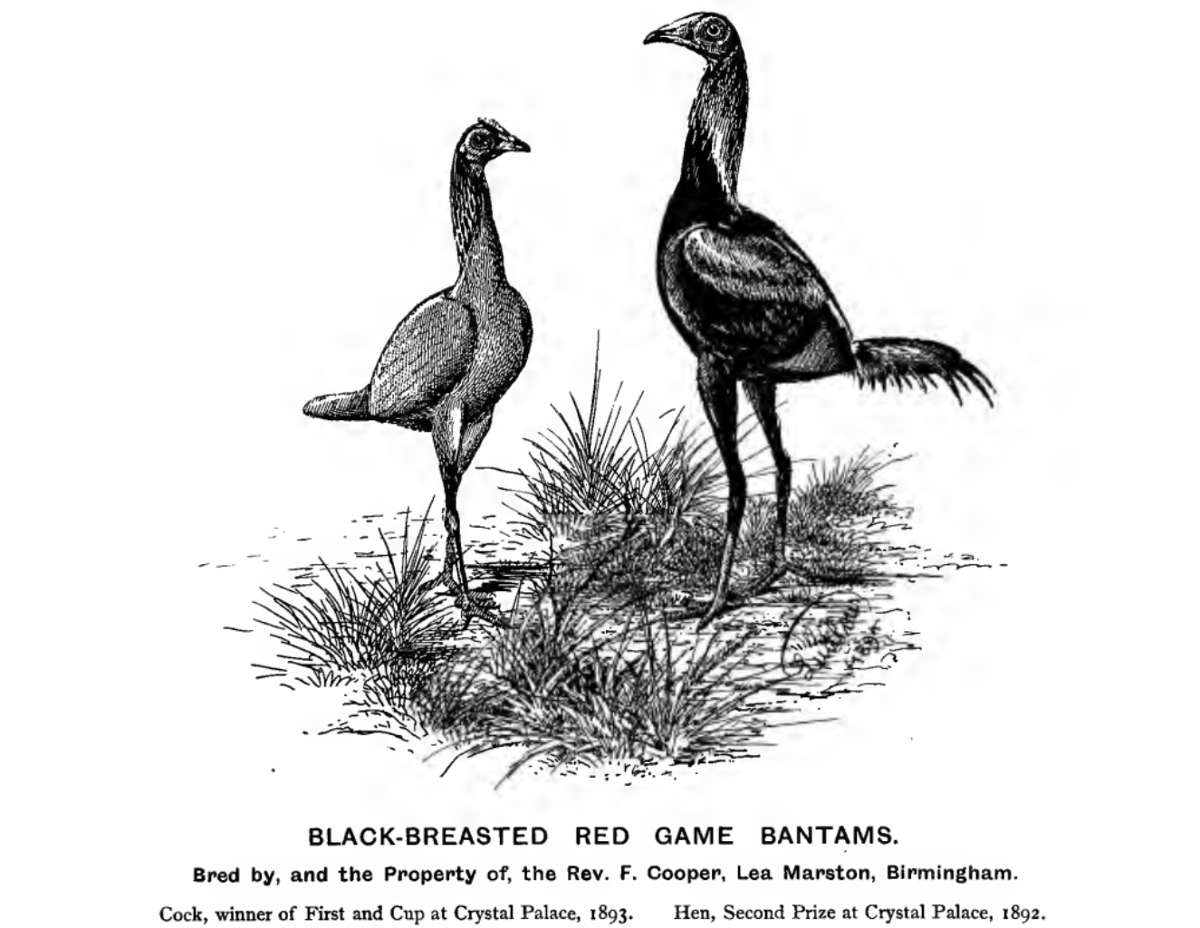
Inbreeding in chickens is a breeding practice that involves mating closely related birds, such as siblings or parent-offspring pairs.
Table of Contents
While inbreeding can be used in specific situations, it's generally not recommended in poultry breeding due to the potential for negative consequences. However, there are situations where controlled inbreeding is employed, and I'll explain those as well.
Chickens will quite happily breed with any member of their own family, including brothers and sisters and parents and offspring.
All domesticated chicken breeds are inbred to some extent. The original wild chicken was the jungle fowl and any modern bird that differs in appearance from that has been inbred at some point to accentuate some features and remove others.
Of course, every breed of chickens, cow or dog we have today was produced by line-breeding, which is the art of mating closely related animals together to fix in their genetic make-up the qualities or conformation the breeder is looking for.
Some degree of inbreeding is involved when any pair of mated chickens have a common ancestor.
Below: I used inbreeding to fix this leg colour in my Barnevelders.
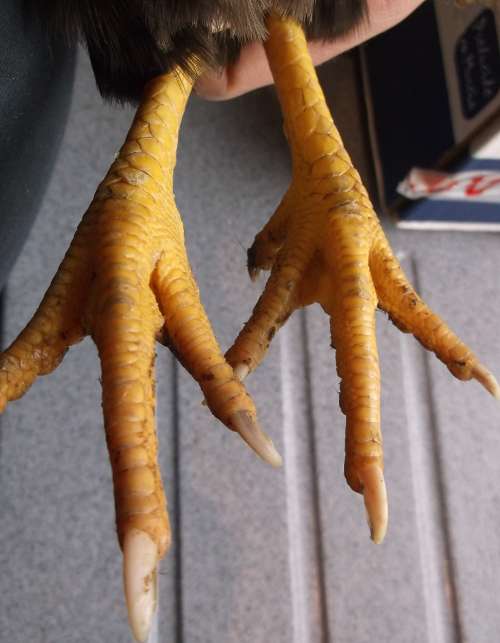
Inbreeding does not create and by itself does not put anything in. It does not create either good points or bad ones. It only makes the best or worst of what is there. Hence the need to have all the good points at your disposal, with the object eventually of condensing them all in the best birds you breed.
In humans, inbreeding is associated with consanguinity and incest, in which close relatives have sexual relationships and children. Inbreeding violates modern social norms, but is fairly common in animals and plants.
Is inbreeding in chickens a good or bad thing?
The short answer is it can be both a good and a bad thing.
Inbreeding can also be used by hobbyists and small-scale breeders to improve their flocks. However, it is important to be aware of the risks involved and to take steps to minimise them.
Inbreeding increases the likelihood that chickens will inherit two copies of the same gene from each parent. This can be beneficial for breeding for specific traits, such as high egg production or fast growth.
Below: I have won the breed category for my egg display. Uniformity in egg production is achieved by breeding siblings that both the desired egg colour genes.
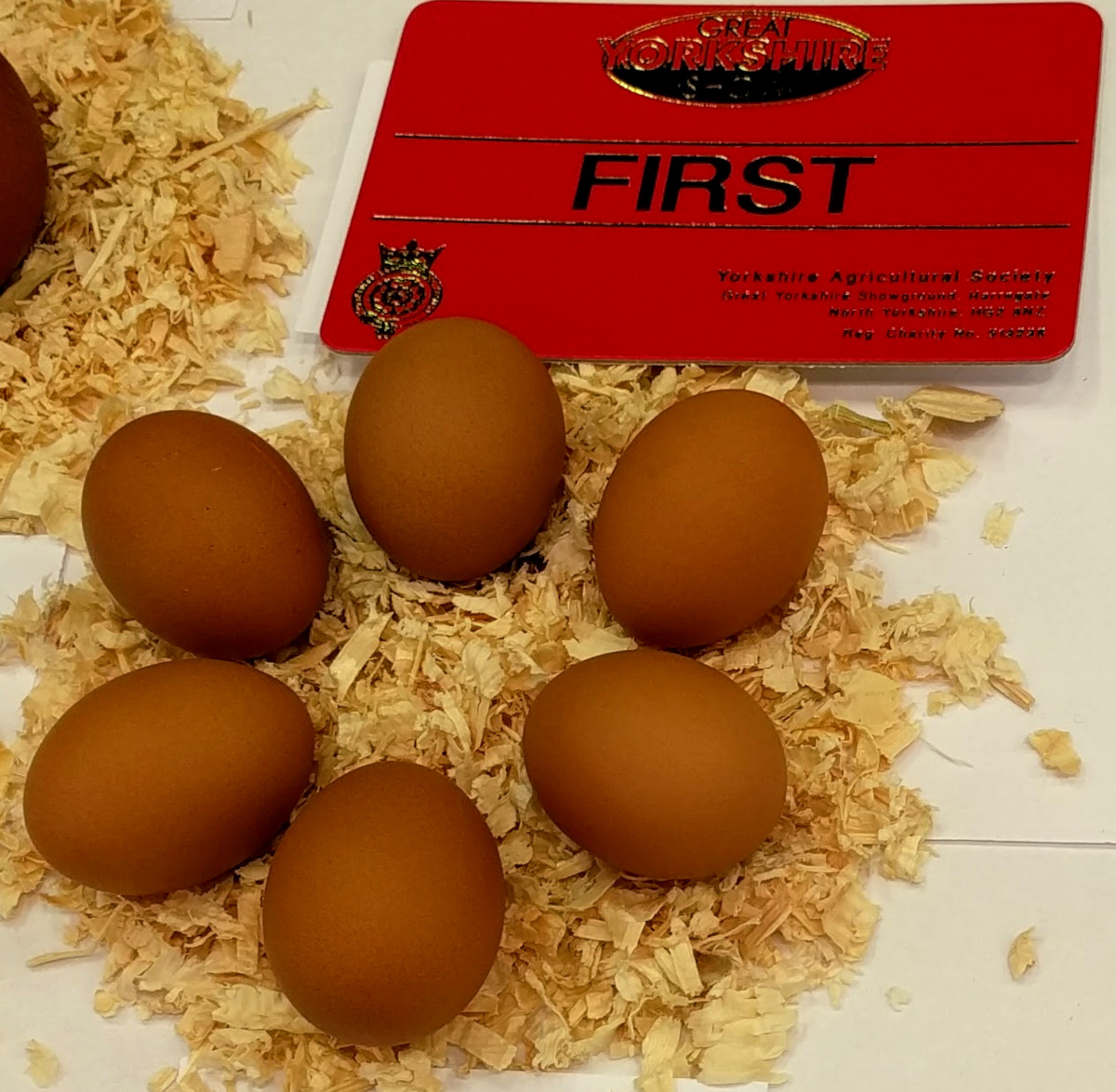
Inbreeding reduces the overall genetic variation in a flock. This can make it easier to maintain desirable traits and to breed for uniformity. This is especially useful for those who show their chickens or their eggs.
Inbreeding is the best way I know of exposing the genetic weaknesses in your chickens.
There are numerous reports and studies of how four or more generations of inbreeding effect the fertility, hatch-ability and viability of stock. This is called inbreeding depression.
Inbreeding depression is a decrease in overall fitness and performance that can occur as a result of inbreeding. This is because inbreeding increases the likelihood of inheriting harmful recessive genes.
Inbreeding can increase the risk of genetic defects, such as deformities, diseases, and fertility problems.
Tips for avoiding inbreeding depression in chickens:
- Keep track of the pedigrees of your chickens so that you can avoid mating closely related individuals.
- Introduce new blood into your flock by bringing in chickens from outside sources.
- Breed and select for vigour and health, as well as for other desirable traits.
- Weigh the potential benefits and risks carefully.
- Consult with experienced poultry breeders.
Can you breed closely related chickens?
You can breed sibling and closely related chickens. Breeding brothers and sister chickens is commonly used to fix a certain characteristic in the birds.
I used it several years ago to ensure the bright yellow colours of the legs on my silver laced Barnevelders
This includes the breeding of chickens from the same hatch. Deciding to use inbreeding is not a decision to be taken lightly and require s some planning and your choice of birds should be good and you should not choose mate brother and sister chickens from the same hatchery fro example.
Below: A breeding project of mine for the Silver laced Barnevelder.
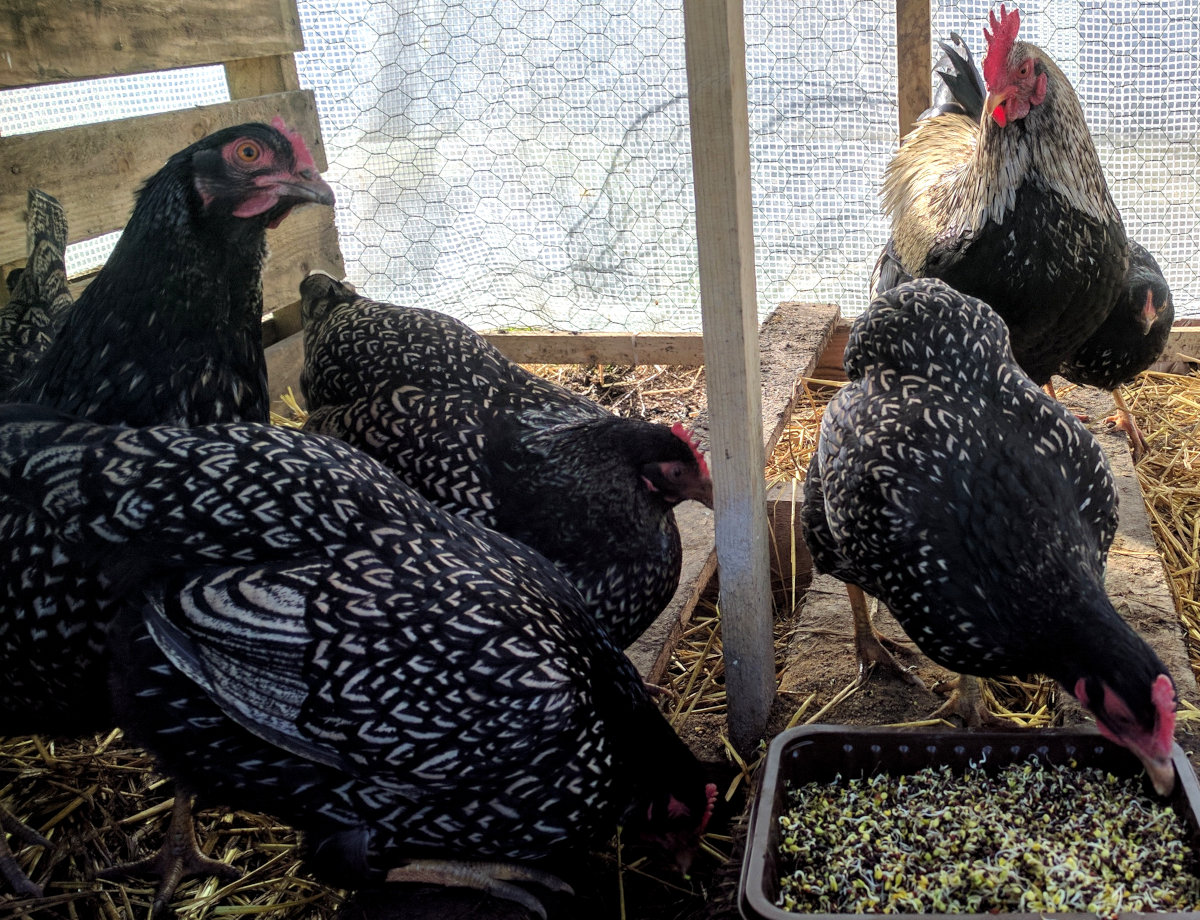
Chickens are a little more tolerant of inbreeding than many species. You can safely mate brother and sister chickens for at least a few generations.
The big problem with breeding together brother and sister chickens is that you merely reassemble the genes of the parent so unless this is your specific intended result, it is probably best avoided.
Breeding a brother and sister together will never produce a chickens that is of better quality than the parent. On the other hand, a young bird bred from father and daughter, for instance, can have a double dose of a particular desirable quality carried by the father
If you do too much inbreeding, the first issue you will run into will be a loss of fertility, which will result in a low or non-existent hatch rate.
When to In-Breed.
When it comes to a certain characteristics, as in a show bird, where the comb has to be possessed of certain qualities, where the shape of the head is fixed, the colour of eye, length of body, carriage, colour of plumage, legs, beak, and markings all defined in a recognised standard, then you are going to need to make use of inbreeding to some extent to fix these to that standard.
I know from experience how much time and what hard work it is to breed good birds and animals with a fixed type unless in-breeding is resorted to although it is not a system for every circumstance.
It would be folly to in-breed from any specimens not in robust health. If there is a tendency to infertility in any of the animals used, then inbreeding can accentuate it, although inbreeding itself will not cause it.
The only cases in which I recommend in-breeding are these :
- Firstly, for the purpose of fixing some chance good point.
- Secondly, for the improvement of good birds.
- Thirdly, to maintain the high state of perfection that certain fowls may have been brought to.
Do not use inbreeding if:
- If the stock is gaining or losing size.
- They do not appear to be healthy.
- They are developing some fault - consult a gene library a look up the gene in question.
- Fertility or hatchability are effected.
Above all things, always breed from the best birds, and although a bird with only one particularly good point may take your fancy, avoid it for breeding purposes.
A fairly good all-round bird will produce better results than one that is perfect in one point, and faulty in all others.
Lastly, where I recommend in-breeding is in order to maintain the high state of perfection to which the stock has attained. Thus inbreeding may be said to be a double edged sword, and it is essential to use one edge only.
What is the difference between line-breeding and inbreeding?
The expression 'line-breeding' also implies the pairing together of related individuals, and it is a form of inbreeding. Actually the distinction between inbreeding and line breeding cannot be sharply defined.
The way I think of it is that inbreeding creates and line breeding maintains the strain.
Line-breeding is a type of inbreeding that involves mating more distantly related individuals. This is typically done by mating individuals to their ancestors or to close relatives of their ancestors. Line-breeding is often used to concentrate desirable traits in a bloodline or to develop a new breed.
Inbreeding, on the other hand, is the mating of closely related individuals, such as parents and offspring, siblings, or half-siblings. Inbreeding is more likely to result in the expression of recessive traits, both desirable and undesirable. It can also lead to a loss of genetic diversity, which can make a population more susceptible to diseases.
The difference between line-breeding and inbreeding is a matter of degree. Line-breeding is generally considered to be a less risky form of inbreeding, but it is still important to carefully select breeding pairs to avoid the negative effects of inbreeding.
Here is a table that summaries the key differences between line-breeding and inbreeding:
| Characteristic | Line-breeding | Inbreeding |
|---|---|---|
| Definition | Mating more distantly related individuals | Mating closely related individuals |
| Risks | Lower risk of recessive traits and loss of genetic diversity | Higher risk of recessive traits and loss of genetic diversity |
| Examples | Mating a chicken to its grandparent | Mating a chicken to its parent or sibling |
The golden rule of inbreeding can be expressed in two words selection and elimination. Selection of the right mates as indicated by appearance and pedigree; ruthless elimination of any bird that is for any reason undesirable.
When inbreeding I am not so concerned as to whether the relationship between the members of a mated pair is near or far as I am with the suitability of the two birds as mates. I don’t deliberately breed from very closely related birds because they are closely related; I prefer a rather more distant relationship if I can achieve my objective.
Below: Birds like this stunning Rosecomb bantam have been in and line bred for decades.
I am often asked if there are any particular relationships which I favour, providing the two birds to be paired satisfy as regards their appearance. I can only answer this in a general way, I like uncle and niece, aunt and nephew, cousins, father and daughter, mother and son, grandfather and granddaughter, grandmother and grandson. I particularly favour half-brother and sister when the parent of both is a bird of outstanding merit.
I never mate brother and sister unless the two birds are of exceptionally high quality or I am doing it for a specific purpose. The offspring of brother and sister can only have in their genetic composition the characteristics of the two parents reassembled, and you are not likely from such a mating to produce a bird better than either of its parents.
The breeder needs to set a quality line, and any bird or animal which falls below that line must not be bred from. Every year onwards that quality line must be raised higher.
Eugene Davenport in The Principles of Breeding (Davenport—The Principles of Breeding: Thremmatology (Ginn & Co))wrote:
"By "line-breeding" is meant the restriction of selection and mating to the individuals of a single line of descent. The purpose of this system of breeding is real breed improvement, to get the best that can be gotten out of the race, and better than ever before if possible. Experience has shown that if the purpose be breed improvement carried to its limits, it is not enough to confine selection to the limits of the breed. All breeds are exceedingly variable, and real results aiming at anything more than mere multiplication can follow only closely-drawn lines within the breed—breeding in line, or line-breeding."
And also:
"Line-breeding excludes everything outside the approved and chosen line of breeding. It not only combines animals very similar in their characters, but it narrows the pedigree to few and closely related lines of descent. This "purifies" the pedigree rapidly and gives the ancestry the largest possible opportunity. The system is eminently conservative. It discourages variability, and rapidly reduces it to a minimum. Moreover, whatever variations do occur will be in line with the prominent characters of the chosen branch of the breed."
